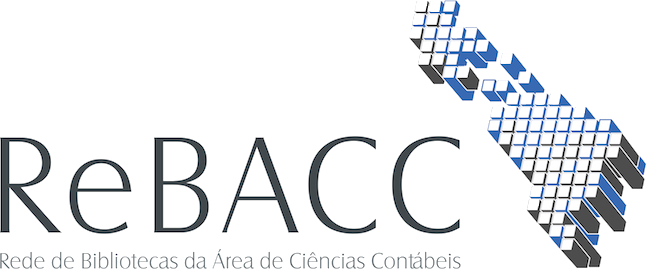Use este identificador para citar ou linkar para este item:
http://rebacc.crcrj.org.br/handle/123456789/3606| Título: | Human capital and the economical-financial development of brazilian companies of the electric industry CAPITAL HUMANO E O DESEMPENHO ECONÔMICO-FINANCEIRO DE EMPRESAS BRASILEIRAS DO SETOR ELÉTRICO |
| Palavras-chave: | Human capital. Economical-financial. Resource Based View. Capital Humano. Desempenho Econômico-financeiro. Teoria de Recursos e Capacidades. |
| Editora / Evento / Instituição: | AnpCONT |
| Descrição: | This paper characterize as empiric study about intangible resources, based in the theory Resource Based View of the Firm (RBV) with the objective of analyzing if relationship exists among the investment in human capital and the economical-financial development of the companies of the electric section, with striped actions in the Brazilian stock exchange. The universe of 26 Brazilian companies of the electric industry, in the period from 2001 to 2008, a sample of 184 representative elements was analyzed. The methodology was of OSM, with data in panel. For representation of the explanatory variable on intangible resources was used Value Added Intellectual Coefficient - VAICTM coefficient, proposed by Pulic (2000). The obtained results are statistically significant, the one that makes possible infer that the companies that invested more in human capital those that obtained better economical-financial acting were. This study, considering the electric segment, it supplies empiric evidences that the companies that invest in human capital and financial capital can obtain better economical-financial acting. Este artigo caracteriza-se como estudo empírico sobre recursos intangíveis, fundamentado na teoria Resource Based View of the Firm (RBV) com o objetivo de analisar se existe relação entre o investimento em capital humano e o desempenho econômico-financeiro das empresas do setor elétrico, com ações listadas no mercado de capital brasileiro. Com o universo de 26 empresas brasileiras do setor elétrico, no período de 2001 a 2008, configurou-se uma amostra de 184 elementos representativos. A metodologia utilizada foi de regressão por Mínimos Quadrados Ordinários, com dados em painel. Para representação da variável explicativa sobre recursos intangíveis foi utilizado o coeficiente de valor agregado dos recursos intangíveis Value Added Intellectual Coefficient - VAICTM, proposto por Pulic (2000). Os resultados obtidos são estatisticamente significativos, o que possibilita inferir que as empresas que investiram mais em capital humano foram aquelas que obtiveram melhor desempenho econômico-financeiro. Este estudo, considerando o segmento elétrico, fornece evidências empíricas de que as empresas que investirem em capital humano e capital financeiro poderão obter melhor desempenho econômico-financeiro. |
| URI: | http://rebacc.crcrj.org.br/handle/123456789/3606 |
| Outros identificadores: | http://asaa.anpcont.org.br/index.php/asaa/article/view/127 |
| Aparece nas coleções: | Revista ASAA |
Arquivos associados a este item:
Não existem arquivos associados a este item.
Os itens no repositório estão protegidos por copyright, com todos os direitos reservados, salvo quando é indicado o contrário.

